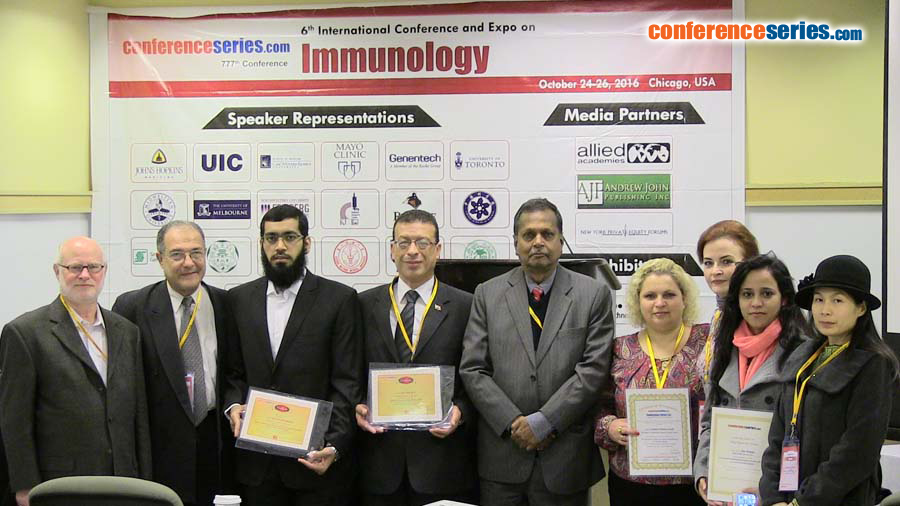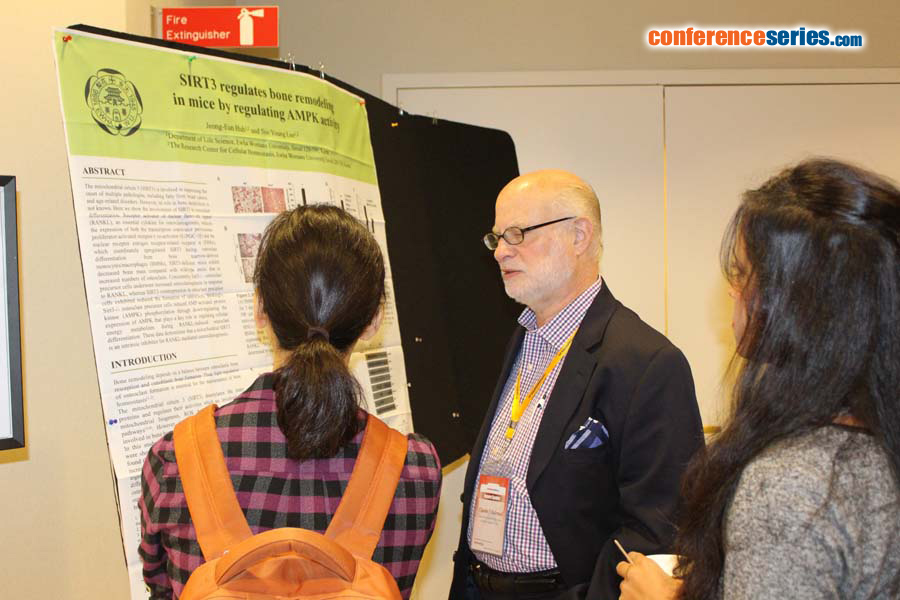Roxana S Dronca
Mayo Clinic, USA
Title: T cell Bim is a novel predictive and monitoring biomarker for response to anti-PD-1 cancer therapy
Biography
Biography: Roxana S Dronca
Abstract
Anti-Programmed Death 1 (PD-1) blockade therapy aims to restore antitumor immunity by impeding interactions of PD-1 receptors on tumor-reactive T cells with PD-1 ligands (e.g., PD-L1/B7-H1) expressed by tumor cells. Clinical trials with PD-1 and PD-L1 blockade have demonstrated promising therapeutic responses in 17-40% of patients with advanced malignancies. However, clinical outcomes are variable with some patients achieving rapid and durable complete responses to both primary anti-PD1 therapy or upon re-induction, others experiencing early pseudo-progression followed by significant reduction in tumor burden with continued therapy, while a subset of patients will show no clinical benefit. It is still unclear what ultimately separates responders from non-responders and there are no criteria by which to identify patients who might derive late clinical benefit. We propose an individualized strategy of identifying patients most likely to benefit from anti-PD1 therapy based on the sensitivity of their PD-1+ CD8+ cytotoxic T lymphocytes (CTLs) to anti-PD-1 blockade. We propose that this sensitivity is influenced by the status of PD-1 engagement with its ligand PD-L1 at the tumor site and also systemically, which determines the reversibility of PD-1+ T cells. The release of biologically active soluble sPD-L1 (sB7-H1) into the circulation contributes to global immunosuppression and indirectly affects the efficiency of anti-PD-1 blockade. Since we co-discovered B7-H1 (PD-L1) in 1998 by Dr. Dong, mentor and co-investigator, we have been working on dissecting the mechanism of action of B7-H1 and its receptor PD-1. Recently, we identified that Bim (BCL-2 interacting mediator of cell death) a pro-apoptosis molecule, is a downstream signaling molecule of the PD-1 pathway and that high Bim levels are associated with poor survival in patients with metastatic melanoma. The interaction of PD-1 and PD-L1 leads to Bim up-regulation in human primary CD8+ T cells via AKT activation and Bim phosphorylation. Among tumor-reactive PD-1+ CD11ahigh CD8+ T cells in the peripheral blood of metastatic melanoma patients, Bim expression was significantly associated with expression of PD-1 and effector cell markers. However, higher Bim expression and higher frequency of circulating Bim+ PD-1+ CD8+ T cells were identified in patients who derived clinical benefit from anti-PD-1 therapy compared to patients with radiographic progression at 12 weeks; moreover this cell population decreased significantly after successful anti-PD-1 therapy. Our study reports a crucial role of Bim as a downstream signaling molecule of PD-1, which may be important in both T cell activation and apoptosis and reflects the status of PD-1 interaction with its ligand PD-L1 in tumor reactive effector CD8+ T cells. Measurement of Bim levels (frequency and MFI) in the peripheral blood of patients with cancer may be a less invasive and more sensitive way to monitor or possibly predict responses to anti-PD-1 therapy, although future prospective analyses are mandatory to validate Bim as a biomarker of response in the clinic. Our group has also established the existence of sB7-H1 in sera of patients with cancer (renal cell carcinoma and melanoma) and showed that the protein is biologically active and capable of triggering apoptotic signals in target T-cells due to retention of PD-1 binding domain. Increased sPD-L1 (sB7-H1) levels predictably would lead to increased Bim levels and increased T cell apoptosis. Thus, simultaneously determining serum sPD-L1 levels and Bim in tumor-reactive CD8+ T cells may have more predictive value than either marker alone to predict the response to anti-PD-1 therapy and also identify patients who may benefit from dual immune checkpoint blockade to remove noxious immunosuppressive sB7-H1 molecules.





